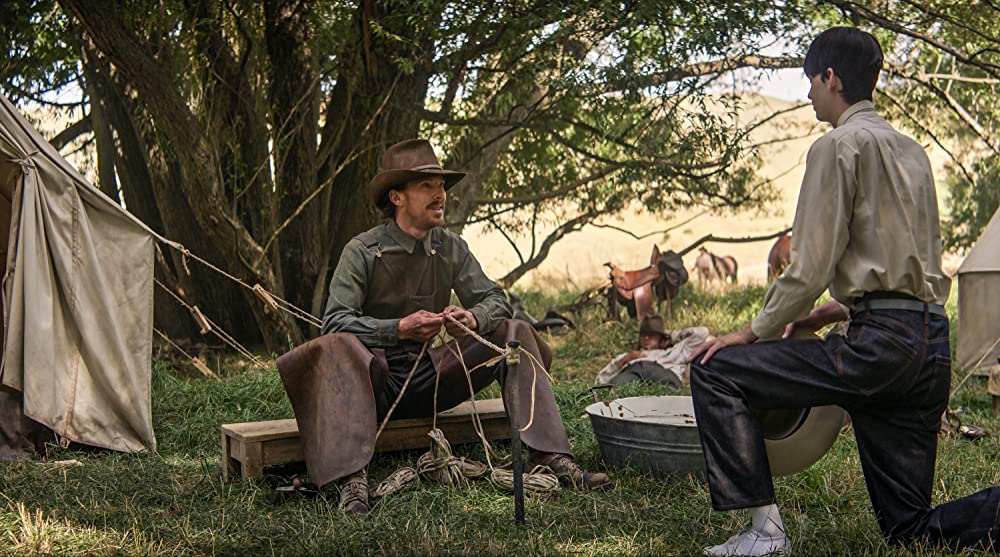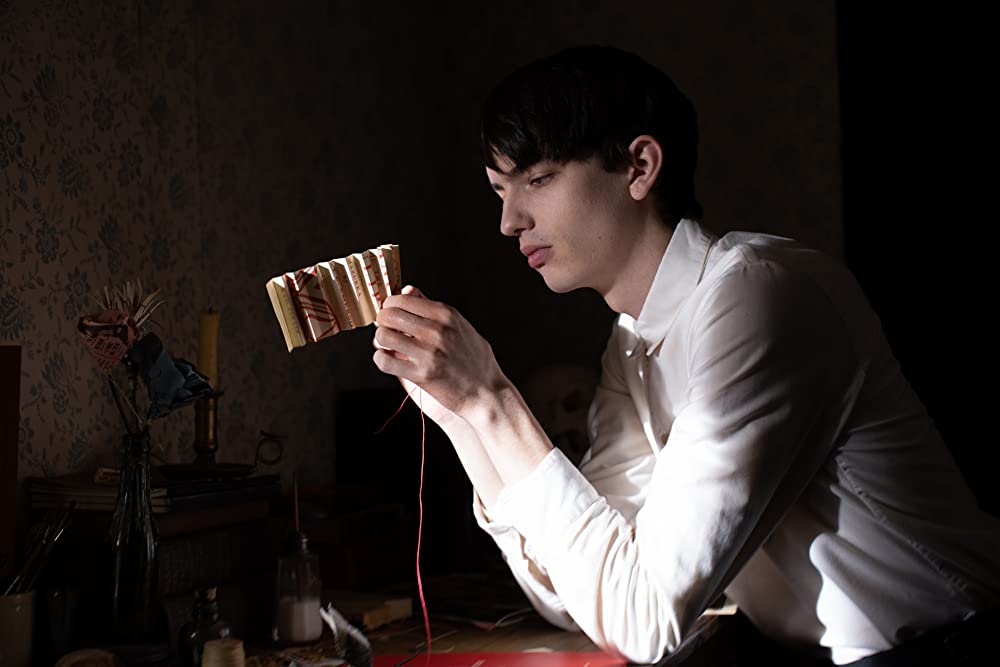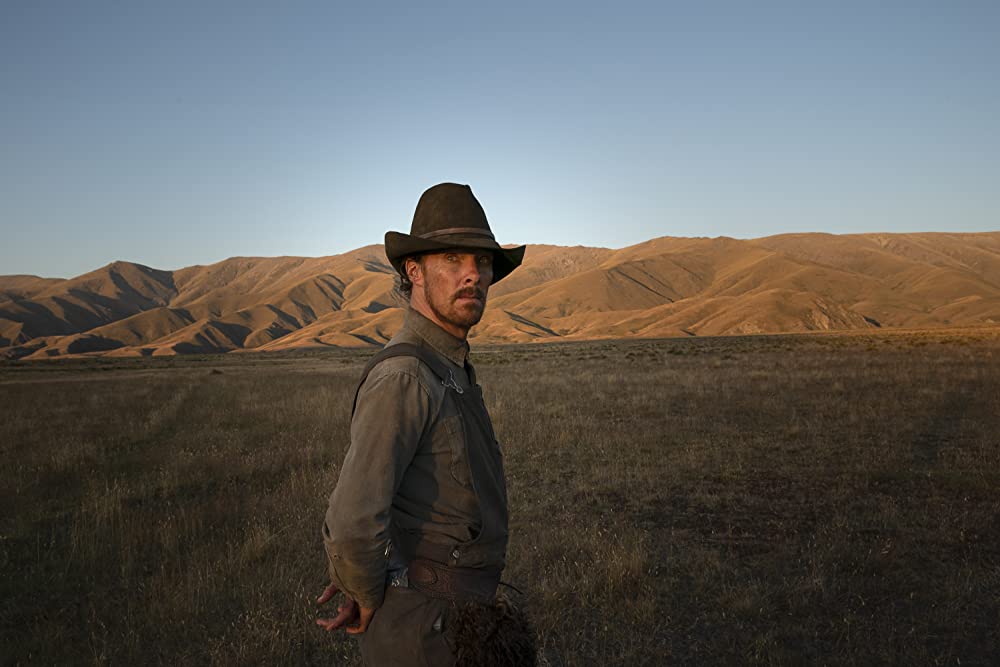By Meghana Krishnamurthy, Third Year, Film and Television
Towards the beginning of the film is a scene where Phil Burbank stands in his ranch with his ranch hands, looking out at great, imposing mountains in the distance. He asks them if they can see something on the mountain. The ranchers reply as always that their eyes can’t hope to find what Phil is talking about.
My friend and flatmate who works at Watershed cinema was able to pick up some posters which are decorated with beautiful stills, BTS shots and images of storyboards on the reverse. And it was on one of these posters that I first discovered the magnificent wide shot of those mountains. I was in awe, but I could never guess what its significance was, or what the ranchers in the foreground could possibly be looking at.
The Power of the Dog follows the lives of two brothers who own a big cattle ranch in 1920s Montana. Phil Burbank, a Yale educated rancher, played by a haunting Benedict Cumberbatch, has lived 25 years of his life alone with only his brother George (Jesse Plemons), for close company. Their lives are disrupted when George brings home his new wife Rose (Kirsten Dunst) and her effeminate son Peter played by a wise Kodi Smit-McPhee.
Phil Burbank is a cold, spiteful man who is accustomed to reigning as the alpha male on their ranch. His own brother, whom he often calls ‘fatso’, is even at times afraid to tell him the truth out of the fear of what his reactions may be. But it is when Rose arrives that he feels the loss of his power balance. He takes out his frustration and anger on a horse, by slapping her on her face and calling her a ‘flat faced bitch’ in a scene that drew an audible gasp from the audience at the cinema. And so, Phil resorts to terrorising her by turning her love for piano into a frightening memory and reminding her of her failures with a chilling whistle. It drives her to seek comfort in alcoholism.

Jane Campion elevates Phil’s presence with a superb screenplay and costume design by Kirsty Cameron. All of his clothes are made of rough, worn fabrics. His heavy boots pound every time he walks on a wooden floor. He wears woollen chaps which flail around every time he moves. Benedict Cumberbatch’s arresting performance is a testament to the masculinity and culture surrounding the audience’s perception of the macho cowboy.
That is exactly where Peter plays his part. As a young man, he is much more concerned with how his new jeans look, without dyeing them for a more practical use. He makes paper flowers to adorn the tables at his mother’s inn, and speaks with a bit of a lisp, which is enough for Phil to pick up on and ridicule.
It was only after I got back home from the cinema that my eyes caught the film poster once again. It brought a smile to my face, because I could now see what Phil’s ranchers could not—the shadow of a barking dog over the mountain. In Phil’s tall tales, it was his revered late mentor Bronco Henry who used to muse about the power of imagination that the dog held over the few who could notice it at first. As the film goes on, the audience begins to see Phil’s tough layers unravel, and so does Peter, as he discovers the truth behind Phil’s relationship with Bronco Henry. That power dynamic slowly shifts to Peter and eventually to the audience.

Throughout the film’s two-hour runtime, Johnny Greenwood’s impressive score aides the visuals in a way that it never fails to keep a hold of the audience’s attention. It plays in harmony with the breath-taking cinematography showcasing the dreamy existence of these ranch hands, reminding me of the pleasure that you could gain from the final act as John Marston partaking in menial chores on his land in Red Dead Redemption 2. This is almost replicated, only in the case of Phil, his intimidating presence is short of joy to those around him.
Featured Image: IMDB, Netflix
Discover The Power of the Dog on Netflix now








